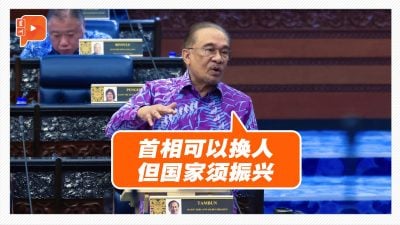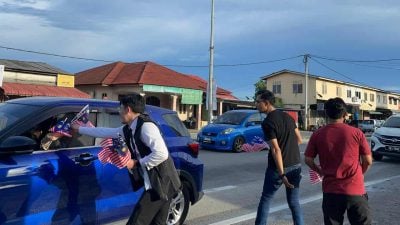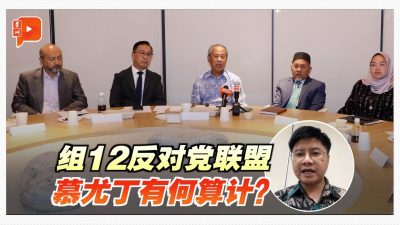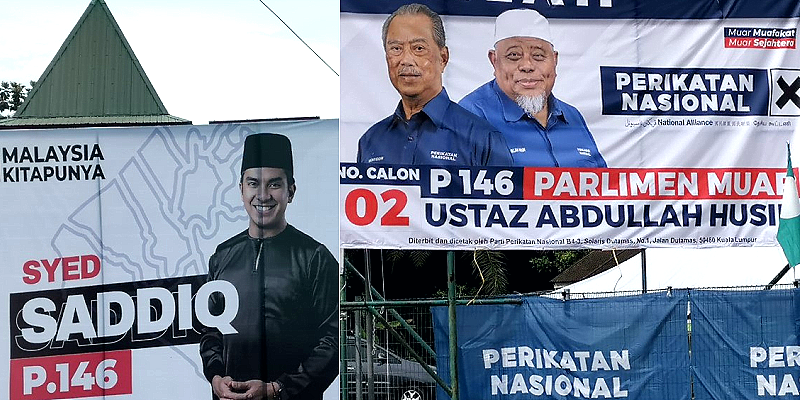
MUDA, a youth-based party in Malaysia, seeks greater recognition from Pakatan Harapan.
However, the recent general election outcome in Muar, MUDA’s sole parliament win, shows the limits of the party’s traction, notably among Malay youth.
Ahead of the six state elections likely to be held in July 2023, the Malaysian youth-based party, MUDA, has stated its wishes to be involved in Pakatan Harapan (PH) seat negotiations.
MUDA;s need to publicly air its desire arguably reflects its predicament of being accorded a cold shoulder since the PH unity government was formed.
To understand if MUDA’s predicament will continue, it is crucial to examine its ability to attract youth votes in the 2022 general election (GE2022) held last November.
Granted, as MUDA contested only in a handful of seats in GE2022 it is almost impossible to accurately pin down their nationwide impact.
Nonetheless, studying the Muar parliamentary seat can serve as a useful case study.
Firstly, Muar is an incumbent seat held by MUDA president Syed Saddiq. Secondly, Muar has a large number of young electorate who would be a target demographic given MUDA’s raison d’être.
Lastly, Muar’s bumiputra/non-bumiputra ratio closely mirrors the national average and the seat has urban, semi-urban and rural localities.
The Johor state election held in March 2022 – where MUDA won just one out of seven state assembly seats it contested – was the first sign that the party might struggle in GE2022.
Indeed, despite a closer alliance with PH in the general election, MUDA won one out of six parliamentary contests.
Moreover, Syed Saddiq prevailed in Muar by a whisker of 1,345 votes — or 2.5 per cent — over Abdullah Husin from PAS, the Islamist party in the Perikatan Nasional (PN) coalition.
This was a steep decline compared with 2018 when Syed Saddiq won by a comfortable margin over his Umno rival, with PAS’ candidate straggling far behind.
Despite his relatively old age of 61, Abdullah came tantalizingly close to wresting Muar from Syed Saddiq.
The picture does not look more optimistic for MUDA even if we focus solely on the voting patterns among young electorate.
Malaysians in each parliamentary seat are assigned to vote in a particular polling district (PD).
On polling day, voters in a polling district are segregated into streams based on their age – oldest voters are assigned to the smallest-numbered streams and youngest voters into highest-numbered streams.
By examining the highest-number streams in all of Muar, a broad picture emerges on the youngest age group’s voting preference.
In GE2022, PAS won the highest-numbered streams in 20 PDs, ahead of MUDA’s 11 and Umno’s two.
In terms of total votes, PAS garnered 5,949 of the youngest votes, compared to MUDA’s 5,216 and PAS’ 3,363 votes.
On the face of it, PAS and MUDA were neck-and-neck when competing for the youngest votes, with the former being marginally ahead of MUDA.
However, a deep dive into the results indicate that the bulk of MUDA’s youngest votes came from non-Malays, who constitute 32 per cent of Muar’s overall electorate.
MUDA had a huge lead over PAS and Umno for youngest votes in non-Malay majority PDs (Figure 1).
This trend broadly mirrors other seats elsewhere in Johor and Peninsular Malaysia, which may indicate non-Malays’ receptiveness towards PH — or allies of PH —rather than MUDA per see.
Figure 1: Voting patterns for Muar’s highest-numbered (youngest) voting streams based on polling district’s ethnic composition
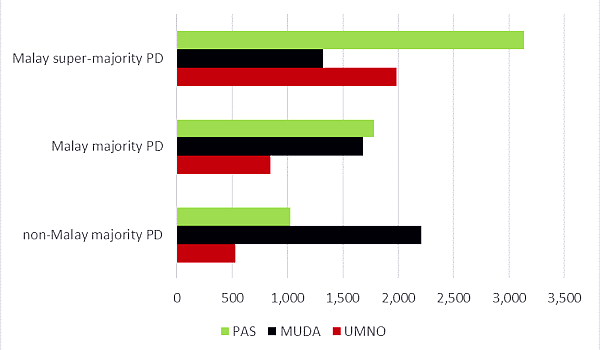
In contrast, PAS obtained slightly more than half of the youngest votes in Malay-supermajority PDs, with Umno coming second and MUDA a distant third.
MUDA only captured about 20 per cent of youngest votes in Malay-supermajority PDs, which is a strong indicator that PAS is more popular than MUDA among young Malay voters.
The sense that MUDA played second fiddle in rural and semi-urban Muar was palpable during fieldwork conducted prior to polling day.
At a fishing jetty along the constituency’s rural coastline, a Malay male commented that “Syed Saddiq is alright as a person, but too young and absent from the ground” before conceding that “the real contest here is Umno against PAS.”
Helmy Abdul Latif, Umno’s candidate for Muar, is about ten years older than Syed Saddiq and the age gap could be perceived as a sign of experience and competence in addition to BN’s brand loyalty.
Contrary to common perception, PAS’s support was not confined to young Malays in rural and semi-urban PDs, as PAS did well even in urban PDs located in or around Muar town which have a high concentration of Malays.
In the two PDs bolded in red in which Malays comprise 75 per cent or more of voters, PAS won the most vote share, vastly eclipsing MUDA (Map 1).
Map 1: Youngest-age streams’ vote share for MUDA and polling district’s ethnic distribution
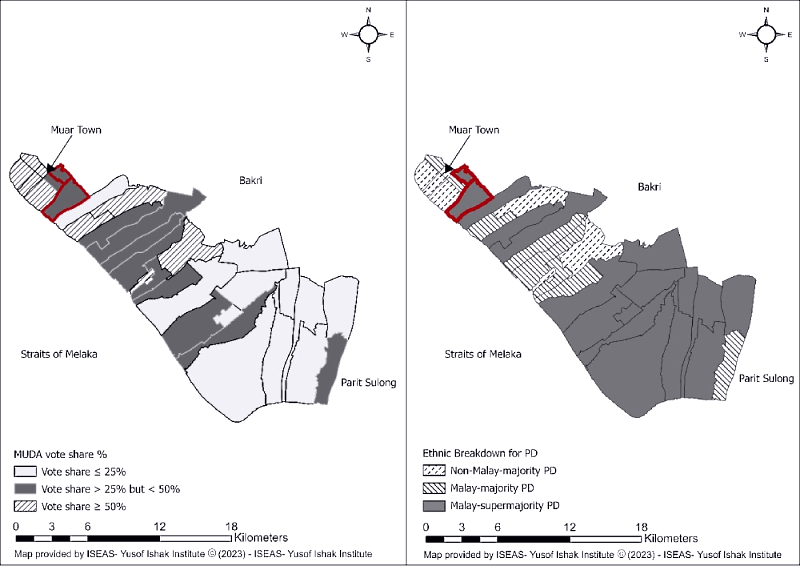
MUDA won most convincingly in non-Malay majority PDs which were also the mainstay of PH, whereas it added little value to the coalition in rural and Malay communities where PH traditionally struggles.
This is starkly seen in the eastern half of Map 1, where most PDs are Malay supermajority and MUDA drew the lowest support.
In fact, MUDA’s vote share was 20% lower on average among the youngest voters in GE2022 compared to GE2018.
How did PAS, under PN’s banner, gain so much ground on MUDA? PN’s general blitzkrieg in the final two weeks of campaigning could not have been the decisive reason why Muar youth votes went to PN instead of MUDA.
Abdullah barely had a social media presence, unlike Syed Saddiq who is one of the most well-known Malaysian politicians with 1.9 million followers on Instagram alone.
With his ustaz background, Abdullah campaigned primarily through mosque visits and delivering sermons.
Consistent with recent youth survey findings, perhaps Muar’s Malay youth voters regard MUDA as too liberal and urban in espousing a multiracial and multireligious society without addressing concerns regarding the centrality of Islam and Malay-bumiputera rights, and hence do not appear an attractive and safe option for many who hold conservative worldviews.
Syed Saddiq’s brand name did little to change that. As a self-employed young Malay at a car wash with Islamic music in the background shared candidly, after some initial reservations, that “Islam and economic concerns are very important” with “PAS having a long presence here [in Muar Town] and is popular among the youths.”
In GE2013, PAS captured Maharani state seat for the first time when it was still part of Pakatan Rakyat and this enabled PAS to build up a formidable grassroots presence.
Going forward, MUDA will likely continue to struggle to gain formal entry into the PH coalition, to join the unity government secretariat meeting, and to extract concessions during the seat negotiation process.
In all this, MUDA carries the burden of proving that it can translate its online popularity into votes and win more youth votes than PN, and it can do this better than the other PH component parties.
The Muar results suggest this remains an uphill battle for the youth-based party.

(First published on Fulcrum. Reproduced with permission.)
ADVERTISEMENT
ADVERTISEMENT







